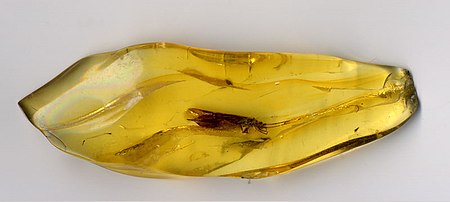|
Królak florydzki
Królak florydzki
| Sylvilagus floridanus[1]
|
| (J.A. Allen, 1890)
|
|
|

|
| Systematyka
|
| Domena
|
eukarionty
|
| Królestwo
|
zwierzęta
|
| Typ
|
strunowce
|
| Gromada
|
ssaki
|
| Podgromada
|
żyworodne
|
| Rząd
|
zajęczaki
|
| Rodzina
|
zającowate
|
| Rodzaj
|
królak
|
| Gatunek
|
królak florydzki
|
| Synonimy
|
- Lepus sylvaticus Bachman, 1837[2]
- Lepus sylvaticus floridanus J.A. Allen, 1890[3]
- Lepus sylvaticus aztecus J.A. Allen, 1890[4]
- Lepus orizabae Merriam, 1893[5]
- Lepus sylvaticus mearnsii J.A. Allen, 1894[6]
- Lepus nigronuchalis Hartert, 1894[7]
- Lepus sylvaticus alacer Bangs, 1896[8]
- Lepus cumanicus O. Thomas, 1897[9]
- Lepus nuttalli mallurus O. Thomas, 1898[10]
- Lepus margaritae G.S. Miller, 1898[11]
- Lepus floridanus chapmani J.A. Allen, 1899[12]
- Lepus (Sylvilagus) superciliaris J.A. Allen, 1899[13]
- Lepus floridanus yucatanicus G.S. Miller, 1899[14]
- Lepus floridanus subcinctus G.S. Miller, 1899[15]
- Lepus floridanus caniclunis G.S. Miller, 1899[16]
- Sylvilagus orinoci O. Thomas, 1900[17]
- Lepus simplicicanus G.S. Miller, 1902[18]
- Lepus floridanus persultator Elliot, 1903[19]
- Lepus (Sylvilagus) russatus J.A. Allen, 1904[20]
- Lepus floridanus connectens Nelson, 1904[21]
- Lepus floridanus chiapensis Nelson, 1904[22]
- Sylvilagus avius Osgood, 1910[23]
- Sylvilagus nigronuchalis continentis Osgood, 1910[24]
- Sylvilagus valenciae O. Thomas, 1914[25]
- Sylvilagus boylei J.A. Allen, 1916[26]
- Sylvilagus purgatus O. Thomas, 1920[27]
|
|
| Podgatunki
|
- S. f. floridanus (J.A. Allen, 1890)
- S. f. alacer (Bangs, 1896)
- S. f. ammophilus A.H. Howell, 1939[28]
- S. f. avius Osgood, 1910
- S. f. aztecus (J.A. Allen, 1890)
- S. f. chapmani (J.A. Allen, 1899)
- S. f. chiapensis (Nelson, 1904)
- S. f. connectens (Nelson, 1904)
- S. f. continentis (Osgood, 1912)
- S. f. costaricensis W.P. Harris, 1933[29]
- S. f. cumanicus (O. Thomas, 1897)
- S. f. hesperius Hoffmeister & M.R. Lee, 1963[30]
- S. f. hitchensi Mearns, 1911[31]
- S. f. hondurensis E.A. Goldman, 1932[32]
- S. f. llanensis Blair, 1938[33]
- S. f. macrocorpus Diersing & Wilson, 1980[34]
- S. f. mallurus (O. Thomas, 1898)
- S. f. margaritae (G.S. Miller, 1898)
- S. f. mearnsii (J.A. Allen, 1894)
- S. f. nigronuchalis (Hartert, 1894)
- S. f. orinoci O. Thomas, 1900
- S. f. orizabae (Merriam, 1893)
- S. f. paulsoni Schwartz, 1956[35]
- S. f. purgatus O. Thomas, 1920
- S. f. restrictus Nelson, 1907[36]
- S. f. russatus (J.A. Allen, 1904)
- S. f. similis Nelson, 1907[36]
- S. f. subcinctus (G.S Miller, 1899)
- S. f. superciliaris (J.A Allen, 1899)
- S. f. yucatanicus (G.S. Miller, 1899)
|
|
| Kategoria zagrożenia (CKGZ)[37]
|

|
| Zasięg występowania
|

|
|
|
|
|
Królak florydzki[38] (Sylvilagus floridanus) – gatunek ssaka z rodziny zającowatych (Leporidae).
Zasięg występowania
Królak florydzki występuje od środkowej Ameryki Północnej przez Środkową do północnej Południowej zamieszkując w zależności od podgatunku[39]:
- S. floridanus floridanus – półwysep Floryda z wyjątkiem jego południowo-wschodniego krańca (południowo-wschodnie Stany Zjednoczone).
- S. floridanus alacer – środkowo-południowe Stany Zjednoczone, w południowo-wschodnim Kansas, środkowym i południowym Missouri, wschodniej Oklahomie, Arkansas, skrajnie zachodnim Tennessee, wschodnim Teksasie, większości Missisipi, skrajnie zachodnio-środkowej Alabamie i Luizjanie.
- S. floridanus ammophilus – wschodni kraniec półwyspu Floryda (południowo-wschodnie Stany Zjednoczone).
- S. floridanus avius – wyspa Conejo (Los Testigos) u wybrzeży północno-wschodniej Wenezueli.
- S. floridanus aztecus – południowa i wschodnia Oaxaca oraz południowo-zachodni kraniec Chiapas (południowo-zachodni Meksyk).
- S. floridanus chapmani – zachodni i południowy Teksas (południowe Stany Zjednoczone), wschodnie Coahuila, północne i wschodnie Nuevo León i większość Tamaulipas (północno-wschodni Meksyk).
- S. floridanus chiapensis – północno-wschodni kraniec Oaxaca oraz środkowe i południowe Chiapas (Meksyk) oraz zachodnia Gwatemala.
- S. floridanus connectens – południowe Tamaulipas, Veracruz z wyjątkiem południowej części, San Luis Potosí, północno-wschodnie Querétaro, północno-wschodnie Hidalgo, północne Puebla i północne Oaxaca (wschodni Meksyk).
- S. floridanus continentis – północno-zachodnia Wenezuela.
- S. floridanus costaricensis – północno-zachodnia Kostaryka.
- S. floridanus cumanicus – północna i środkowa Wenezuela.
- S. floridanus hesperius – północno-zachodnia i środkowa Arizona (południowo-zachodnie Stany Zjednoczone).
- S. floridanus hitchensi – Smith Island i Fisherman Island w hrabstwie Northampton, wschodnia Wirginia (wschodnie Stany Zjednoczone).
- S. floridanus hondurensis – południowo-wschodnia Gwatemala, południowo-zachodni i południowy Honduras, Salwador oraz północno-zachodnia i środkowa Nikaragua.
- S. floridanus llanensis – południowo-zachodni Kansas, południowo-wschodni kraniec Kolorado, zachodnia Oklahoma i północno-środkowy Teksas (środkowe Stany Zjednoczone).
- S. floridanus macrocorpus – Nayarit, południowo-zachodnie Jalisco i południowo-zachodnie Michoacán (zachodni Meksyk).
- S. floridanus mallurus – wschodnie Stany Zjednoczone, od południowo-zachodniego Maine do wschodniej i południowej Pensylwanii oraz wschodniej Wirginii Zachodniej, na zachód przez południowe Kentucky do większości Tennessee (z wyjątkiem skrajnej zachodniej części) i na południe do większości Alabamy (z wyjątkiem skrajnej zachodniej części) i północnej Florydzie.
- S. floridanus margaritae – wyspa Margarita, u wybrzeży północnej Wenezueli.
- S. floridanus mearnsii – północno-centralne i północno-wschodnie Stany Zjednoczone, od Minnesoty na wschód do Michigan i na południe do wschodniej Nebraski, północno-wschodnie Kansas, północne Missouri, Kentucky, północno-zachodni kraniec Wirginii, zachodnia Wirginia Zachodnia, Ohio, północna i zachodnia Pensylwania, północno-zachodnia i północna część Nowego Jorku oraz zachodnie Vermont, także południowo-środkowa i południowo-wschodnia Kanada, w południowo-wschodnim Ontario i południowo-wschodnim Quebecu.
- S. floridanus nigronuchalis – wyspy Aruba i Curaçao (Małe Antyle), u wybrzeży północnej Wenezueli.
- S. floridanus orinoci – departament Vichada (wschodnia Kolumbia) i Wenezuela na południe od rzeki Orinoko.
- S. floridanus orizabae – południowo-wschodnie Coahuila, południowo-zachodnie Nuevo León, południowo-zachodnie Zacatecas, San Luis Potosí, Guanajuato, Querétaro, Hidalgo, północno-zachodnie Veracruz, Meksyk i Puebla (środkowy Meksyk).
- S. floridanus paulsoni – południowo-wschodni kraniec półwyspu Floryda (południowo-wschodnie Stany Zjednoczone).
- S. floridanus purgatus – departamenty Cundinamarca i Tolima (środkowa Kolumbia).
- S. floridanus restrictus – południowo-zachodni Nayarit, środkowe i południowe Jalisco, wschodnia Colima i południowo-zachodnia Michoacán (Meksyk)
- S. floridanus russatus – południowo-wschodni kraniec Veracruz (Meksyk).
- S. floridanus similis – północno-środkowe Stany Zjednoczone, od Dakoty Północnej, południowo-zachodniej Montany i północno-zachodniej Minnesoty na południe do północno-wschodniego i południowo-wschodniego Wyoming, północno-wschodniego Kolorado i północnego Kansas, także w południowo-środkowej Kanadzie, w południowej Manitobie i południowo-wschodnim Saskatchewan.
- S. floridanus subcinctus – Aguascalientes, środkowe i północno-wschodnie Jalisco, południowo-zachodnie Guanajuato i północne Michoacán (Meksyk).
- S. floridanus superciliaris – departamenty La Guajira, Magdalena, Atlántico i Bolívar (północna Kolumbia)
- S. floridanus yucatanicus – północno-zachodni półwysep Jukatan (południowo-wschodni Meksyk).
Podgatunek mearnsii został introdukowany na wyspę Vancouver (południowo-zachodnia Kanada) oraz do stanów Waszyngton i Oregonu (północno-zachodnie Stany Zjednoczone). Introdukowany również we Włoszech i w Alpach[39].
Taksonomia
Gatunek po raz pierwszy naukowo opisał w 1890 roku amerykański zoolog Joel Asaph Allen nadając mu nazwę Lepus sylvaticus floridanus[3]. Holotyp pochodził z Florydy, w Stanach Zjednoczonych[40].
Status taksonomiczny S. floridanus wymaga rewizji[39]. Takson holzneri traktowany wcześniej jako podgatunek S. floridanus[39] w świetle analiz z 2021 roku jest traktowany jako odrębny gatunek[41]. Dawniej S. floridanus obejmował taksony robustus i cognatus jako podgatunki, ale obecnie takson robustus jest uznawany za podgatunek S. holzneri[41] natomiast cognatus jako młodszy synonim S. holzneri[41]. Podobieństwa genetyczne sugerują, że w północno-wschodnich Stanach Zjednoczonyc oznaczenia podgatunkowe nie są uzasadnione dla S. floridanus[39]. Badania genetyczne na szeroko oddzielonych populacjach S. floridanus wskazują na znaczną wewnątrzgatunkową zmienność genetyczną[39]. Autorzy Illustrated Checklist of the Mammals of the World rozpoznają trzydzieści jeden podgatunków[39].
Etymologia
- Sylvilagus: łac. silva „las”; gr. λαγός lagos „zając”[42].
- floridanus: Floryda, Stany Zjednoczone[43].
- alacer: łac. alacer, alacris „aktywny, energiczny, pełen życia”[43].
- ammophilus: gr. αμμος ammos „piasek”; φιλος philos „lubiący, miłośnik”, od φιλεω phileō „kochać”[43].
- avius: łac. avius „samotny”[44].
- aztecus: Aztekowie (nahuatl Azteca), ludność z Meksyku z czasów hiszpańskiej konkwisty[45].
- chapmani: Frank Michler Chapman (1864–1945), amerykański ornitolog, kurator działu ornitologicznego Amerykańskiego Muzeum Historii Naturalnej w latach 1908–1942, kolekcjoner[46][43].
- chiapensis: Chiapas, Meksyk[43].
- connectens: łac. connectens „złączony, połączony, zjednoczony”, od connectere „zjednoczyć, połączyć”[43].
- continentis: nowołac. continentalis „kontynentalny, z kontynentu”, od łac. continens, continentis „ląd stały, kontynent”, od continere „trzymać się razem”[43].
- costaricensis: Kostaryka[43].
- cumanicus: Cumaná, Sucre, północno-wschodnia Wenezuela[43].
- hesperius: łac. hesperius „zachodni”, od gr. ἑσπεριος hesperios „zachodni, wieczorem”, od ἑσπερα hespera „wieczór, zachód”[43].
- hitchensi: kpt. George D. Hitchens (?–?), oficer US Army, komendant stacji na Smith Island[31].
- hondurensis: Honduras[43].
- llanensis: Llano, Teksas, Stany Zjednoczone[33].
- macrocorpus: gr. μακρος makros „długi”[47]; łac. corpus, corporis „ciało”[48].
- mallurus: gr. μαλλος mallos „kosmyk wełny”[47]; ουρα oura „ogon”[49].
- margaritae: wyspa Margarita, Nueva Esparta, Wenezuela[43].
- mearnsii: ppłk. Edgar Alexander Mearns (1858–1916), oficer US Army w latach 1883-1909, chirurg, kolekcjoner z Meksyku w latach 1892-1894, z Filipin w latach 1903-1907 i tropikalnej Afryki z lat 1909–1911[50][43].
- nigronuchalis: łac. niger „czarny”[51]; nowołac. nuchalis karkowy, od średniowiecznołac. nuchus „kark”, od arab. نخاع nukhā’ „szpik kręgosłupa”[52].
- orinoci: Orinoko, Wenezuela[43].
- orizabae: Pico de Orizaba, Veracruz, Meksyk[43].
- paulsoni: Dennis R. Paulson (ur. 1937), amerykański biolog[35].
- restrictus: łac. restrictus „ograniczony”, od restringere „ograniczyć”[43].
- russatus: łac. russatus „ubrany na czerwono, zaczerwieniony”, od russus „rudy”[43].
- similis: łac. similis, simile „podobny, przypominający”[43].
- subcinctus: łac. sub „pod”[53]; cinctus „opasany, w paski”, od cingere „otaczać”[54].
- superciliaris: nowołac. superciliaris „brwiowy”, od łac. supercilium „brwi”[43].
- yucatanicus: półwysep Jukatan, Meksyk/Gwatemala[43].
.
Morfologia
Długość ciała (bez ogona) 400–480 mm, długość ogona 25–61 mm, długość ucha 60–70 mm, długość tylnej stopy 90–105 mm; masa ciała 0,8–1,5 kg[55]. Charakteryzuje się czerwono-brązową lub szaro-brązową sierścią, spodnia strona ogona porośnięta delikatną, białą sierścią.
Ekologia
Najprawdopodobniej najliczniejszy królik na obszarze Ameryki Północnej. Żyje głównie na skrajach lasów lub bagien, czasami również na obszarach uprawnych. Nie jest zwierzęciem terytorialnym. Dojrzałość płciową uzyskuje w 5-6 miesiącu. Pora godowa przypada na luty-wrzesień. Ciąża trwa 26-29 dni, po tym okresie samica rodzi 3-9 młodych.
Królik ten jest w 100% roślinożercą. Odżywia się trawą, poziomkami, koniczyną. W zimie, gdy żywność jest uboga, spożywa gałązki, korę i pąki.
Przypisy
- ↑ Sylvilagus floridanus, [w:] Integrated Taxonomic Information System (ang.).
- ↑ J. Bachman. Additional note on the genus Lepus. „Journal of the Academy of Natural Sciences of Philadelphia”. 7, s. 403, 1837. (ang.).
- ↑ a b J.A. Allen. Descriptions of a new species and a new subspecies of the genus Lepus. „Bulletin of the American Museum of Natural History”. 3, s. 160, 1890. (ang.).
- ↑ J.A. Allen. Notes on collections of mammals made in central and southern Mexico, by Dr. Audley C. Buller, with descriptions of new species of the genera Vespertilio, Sciurus and Lepus. „Bulletin of the American Museum of Natural History”. 3, s. 188, 1890. (ang.).
- ↑ C.H. Merriam. Preliminary descriptions of four new mammals from southern Mexico, collected by E. W. Nelson. „Proceedings of the Biological Society of Washington”. 8, s. 143, 1893. (ang.).
- ↑ J.A. Allen. On the mammals of Aransas County, Texas, with descriptions of new forms of Lepus and Oryzomys. „Bulletin of the American Museum of Natural History”. 6, s. 171, 1894. (ang.).
- ↑ E. Hartert. Lepus nigronuchalis sp. nov. „Novitates zoologicae”. 1, s. 40, 1894. (ang.).
- ↑ O. Bangs. Some new mammals from Indian Territory and Missouri. „Proceedings of the Biological Society of Washington”. 10, s. 136, 1896. (ang.).
- ↑ O. Thomas. Descriptions of new bats and rodents from America. „The Annals and Magazine of Natural History”. Sixth series. 20, s. 552, 1897. (ang.).
- ↑ O. Thomas. Notes on various American mammals. „The Annals and Magazine of Natural History”. Seventh series. 2, s. 320, 1898. (ang.).
- ↑ G.S. Miller. A new rabbit from Margarita Island, Venezuela. „Proceedings of the Biological Society of Washington”. 12, s. 97, 1898. (ang.).
- ↑ J.A. Allen. Descriptions of five new American rodents. „Bulletin of the American Museum of Natural History”. 12, s. 12, 1899. (ang.).
- ↑ J.A. Allen. New rodents from Colombia and Venezuela. „Bulletin of the American Museum of Natural History”. 12, s. 196, 1899. (ang.).
- ↑ Miller 1899 ↓, s. 384.
- ↑ Miller 1899 ↓, s. 386.
- ↑ Miller 1899 ↓, s. 388.
- ↑ O. Thomas. Descriptions of two new murines from Peru and a new hare from Venezuela. „The Annals and Magazine of Natural History”. Seventh series. 5, s. 356, 1900. (ang.).
- ↑ G.S. Miller. A new rabbit from southern Texas. „Proceedings of the Biological Society of Washington”. 15, s. 81, 1902. (ang.).
- ↑ D.G. Elliot. A list of a collection of Mexican mammals with descriptions of some apparently new forms. „Publication. Field Columbian Museum”. Zoological Series. 3 (8), s. 147, 1903. (ang.).
- ↑ J.A. Allen. Mammals from southern Mexico and Central and South America. „Bulletin of the American Museum of Natural History”. 20, s. 31, 1904. (ang.).
- ↑ Nelson 1904 ↓, s. 105.
- ↑ Nelson 1904 ↓, s. 106.
- ↑ W.H. Osgood. Mammals from the coast and islands of northern South America. „Publication. Field Museum of Natural History”. Zoological Series. 10 (4), s. 29, 1910. (ang.).
- ↑ W.H. Osgood. Mammals from western Venezuela and eastern Colombia. „Publication. Field Museum of Natural History”. Zoological Series. 10 (5), s. 57, 1912. (ang.).
- ↑ O. Thomas. Four new small mammals from Venezuela. „The Annals and Magazine of Natural History”. Eight series. 14, s. 413, 1914. (ang.).
- ↑ J.A. Allen. New South American mammals. „Bulletin of the American Museum of Natural History”. 35, s. 84, 1916. (ang.).
- ↑ O. Thomas. Two new species of Sylvilagus from Colombia. „The Annals and Magazine of Natural History”. Ninth series. 5, s. 32, 1920. (ang.).
- ↑ A.H. Howell. Descriptions of five new mammals from Florida. „Journal of Mammalogy”. 20 (3), s. 365, 1939. DOI: 10.2307/1374266.. (ang.).
- ↑ W.P. Harris. A new tree squirrel and a new cottontail rabbit from Costa Rica. „Occasional Papers of the Museum of Zoology, University of Michigan”. 266, s. 3, 1933. (ang.).
- ↑ D.F. Hoffmeister & M.R. Lee. Taxonomic review of cottontails, Sylvilagus floridanus and Sylvilagus nuttallii, in Arizona. „The American Midland Naturalist”. 70 (1), s. 140, 1963. DOI: 10.2307/2422777. (ang.).
- ↑ a b E.A. Mearns. Description of a new rabbit from islands off the coast of Virginia. „Proceedings of the United States National Museum”. 39 (1784), s. 227, 1911. (ang.).
- ↑ E.A. Goldman. Two new mammals from Honduras. „Proceedings of the Biological Society of Washington”. 45, s. 122, 1932. (ang.).
- ↑ a b W.F. Blair. A new race of the eastern cottontail from the Texas Panhandle. „Occasional Papers of the Museum of Zoology, University of Michigan”. 380, s. 1, 1938. (ang.).
- ↑ V.E. Diersing & D.E. Wilson. Distribution and systematics of the rabbits (Sylvilagus) of west-central Mexico. „Smithsonian miscellaneous collections”. 297, s. 8, 1980. (ang.).
- ↑ a b A. Schwartz. The cottontail rabbits (Sylvilagus floridanus) of peninsular Florida. „Proceedings of the Biological Society of Washington”. 69, s. 147, 1956. (ang.).
- ↑ a b E.W. Nelson. Descriptions of new North American rabbits. „Proceedings of the Biological Society of Washington”. 20, s. 82, 1907. (ang.).
- ↑ C.C. Nielsen C.C., H.C.H.C. Lanier H.C.H.C., Sylvilagus floridanus, [w:] The IUCN Red List of Threatened Species 2019, wersja 2021-2 [dostęp 2021-09-21] (ang.).
- ↑ W. Cichocki, A. Ważna, J. Cichocki, E. Rajska-Jurgiel, A. Jasiński & W. Bogdanowicz: Polskie nazewnictwo ssaków świata. Warszawa: Muzeum i Instytut Zoologii PAN, 2015, s. 60. ISBN 978-83-88147-15-9. (pol. • ang.).
- ↑ a b c d e f g C.J. Burgin, D.E. Wilson, R.A. Mittermeier, A.B. Rylands, T.E. Lacher & W. Sechrest: Illustrated Checklist of the Mammals of the World. Cz. 1: Monotremata to Rodentia. Barcelona: Lynx Edicions, 2020, s. 284. ISBN 978-84-16728-34-3. (ang.).
- ↑ D.E. Wilson & D.M. Reeder (red.): Species: Sylvilagus (Sylvilagus) floridanus. [w:] Mammal Species of the World. A Taxonomic and Geographic Reference (Wyd. 3) [on-line]. Johns Hopkins University Press, 2005. [dostęp 2020-10-15].
- ↑ a b c V.E. Diersing & D.E. Wilson. Systematics of the mountain-inhabiting cottontails (Sylvilagus) from southwestern United States and northern Mexico (Mammalia: Lagomorpha: Leporidae). „Proceedings of the Biological Society of Washington”. 134 (1), s. 42–79, 2021. DOI: 10.2988/006-324X-134.1.42. (ang.).
- ↑ T.S. Palmer. Index Generum Mammalium: a List of the Genera and Families of Mammals. „North American Fauna”. 23, s. 655, 1904. (ang.).
- ↑ a b c d e f g h i j k l m n o p q r s t The Key to Scientific Names, J.A.J.A. Jobling (red.), [w:] Birds of the World, S.M. Billerman et al. (red.), Cornell Lab of Ornithology, Ithaca (ang.).
- ↑ Jaeger 1944 ↓, s. 27.
- ↑ Jaeger 1944 ↓, s. 28.
- ↑ Beolens, Watkins i Grayson 2009 ↓, s. 75.
- ↑ a b Jaeger 1944 ↓, s. 130.
- ↑ Jaeger 1944 ↓, s. 59.
- ↑ Jaeger 1944 ↓, s. 247.
- ↑ Beolens, Watkins i Grayson 2009 ↓, s. 268.
- ↑ Jaeger 1944 ↓, s. 146.
- ↑ Jaeger 1944 ↓, s. 148.
- ↑ Jaeger 1944 ↓, s. 225.
- ↑ Jaeger 1944 ↓, s. 51.
- ↑ S. Schai-Braun & K. Hackländer: Family Leporidae (Hares and Rabbits). W: D.E. Wilson, T.E. Lacher, Jr & R.A. Mittermeier: Handbook of the Mammals of the World. Cz. 6: Lagomorphs and Rodents I. Barcelona: Lynx Edicions, 2016, s. 123. ISBN 978-84-941892-3-4. (ang.).
Bibliografia
- G.S. Miller. Descriptions of six new American rabbits. „Proceedings of the Academy of Natural Sciences of Philadelphia”. 51 (2), s. 380–390, 1899. (ang.).
- E.W. Nelson. Descriptions of seven new rabbits from Mexico. „Proceedings of the Biological Society of Washington”. 17, s. 103–110, 1904. (ang.).
- Edmund C.E.C. Jaeger Edmund C.E.C., Source-book of biological names and terms, wyd. 1, Springfield: Charles C. Thomas, 1944, s. 1-256, OCLC 637083062 (ang.).
- B. Beolens, M. Watkins & M. Grayson: The Eponym Dictionary of Mammals. Baltimore: The Johns Hopkins University Press, 2009, s. 1–567. ISBN 978-0-8018-9304-9. (ang.).
Identyfikatory zewnętrzne ( takson): |
|






















